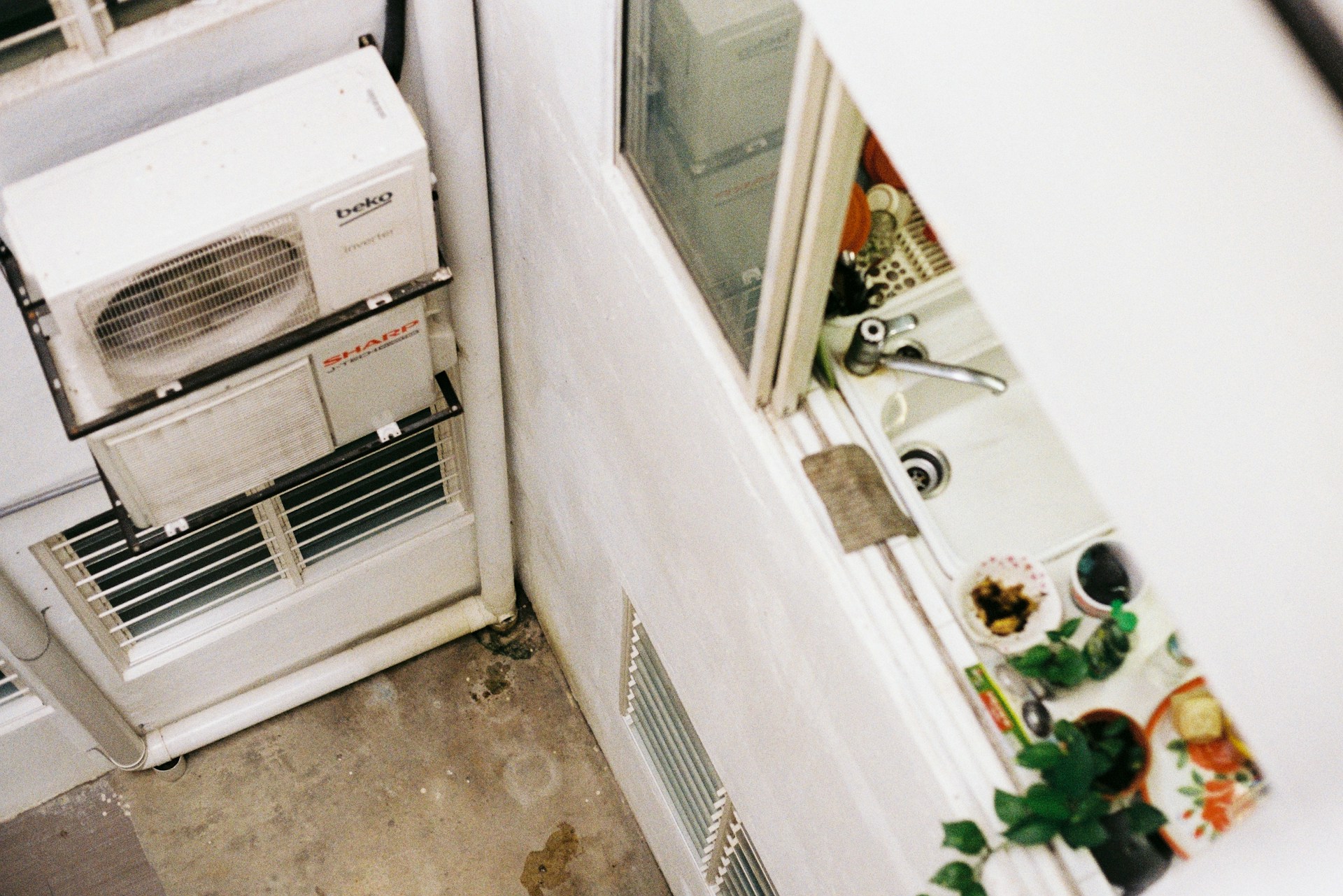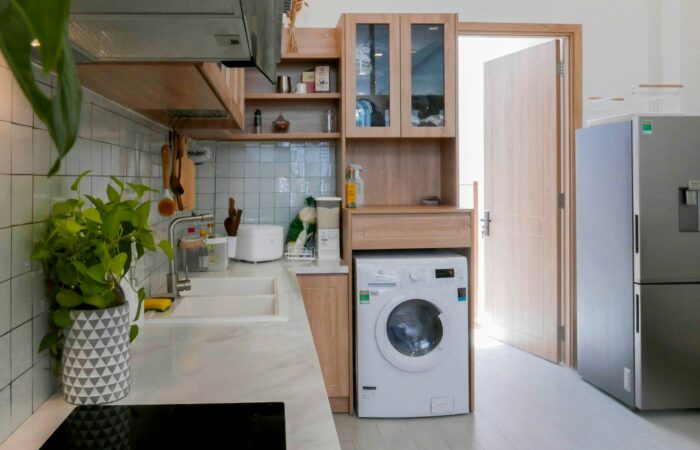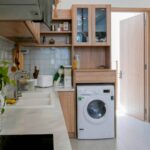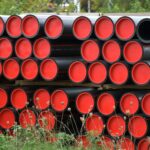
Poor indoor air quality affects millions of homes across America, yet many homeowners remain unaware of how their HVAC system can be their first line of defense against airborne pollutants.
Your heating, ventilation, and air conditioning system does more than regulate temperature—it plays a crucial role in filtering contaminants, controlling humidity, and maintaining the air you breathe every day.
This comprehensive article will show you how to leverage your HVAC system to create a healthier home environment. You’ll discover practical strategies for optimizing air circulation, selecting the right filtration systems, and implementing maintenance practices that protect your family’s respiratory health.
Understanding the Connection Between HVAC Systems and Air Quality
Your HVAC system operates as the circulatory system of your home, moving air through ducts, filters, and conditioning units multiple times each day.
When properly maintained and configured, this system removes dust, pollen, pet dander, and other airborne particles that can trigger allergies and respiratory issues.
The quality of air in your healthy home depends on three key HVAC functions: filtration, ventilation, and humidity control. Each component works together to create an environment where clean air circulates freely while contaminants are captured and removed.
Modern HVAC systems can filter particles as small as 0.3 microns when equipped with high-efficiency filters. This capability makes them highly effective at removing common household pollutants including bacteria, mold spores, and volatile organic compounds (VOCs).
Selecting the Right HVAC Filters for Maximum Effectiveness
Understanding Filter Ratings and Types
Not all HVAC filters provide the same level of protection. The Minimum Efficiency Reporting Value (MERV) rating system helps homeowners choose filters based on their specific air quality needs. Filters with MERV ratings between 8-13 offer excellent performance for most residential applications.
Basic fiberglass filters (MERV 1-4) capture only large particles like dust and lint. While inexpensive, these filters provide minimal air quality improvement. Pleated filters (MERV 5-8) trap smaller particles including pollen and pet dander, making them suitable for households with mild allergies.
High-efficiency filters (MERV 9-12) remove fine particles, bacteria, and some viruses. These filters work well for families with respiratory sensitivities or those seeking superior air quality. Ultra-high efficiency filters (MERV 13-16) provide hospital-grade filtration but may restrict airflow in some systems.
Choosing Filters Based on Your Needs
Homes with pets require filters that effectively capture hair and dander. Look for pleated filters with electrostatic properties that attract and hold pet-related particles. Replace these filters every 60-90 days, or more frequently during heavy shedding seasons.
Allergy sufferers benefit from filters with MERV ratings of 11 or higher. These filters capture pollen, dust mites, and other common allergens before they circulate through your home. Consider upgrading to washable electrostatic filters for long-term cost savings and consistent performance.
Households concerned about germs and viruses should invest in filters with antimicrobial treatments. These specialized filters not only trap pathogens but also neutralize them, preventing growth and reducing the risk of airborne illness transmission.
Optimizing Ventilation for Fresh Air Circulation
Balancing Indoor and Outdoor Air Exchange
Proper ventilation ensures that stale indoor air is replaced with fresh outdoor air at appropriate rates. The American Society of Heating, Refrigerating, and Air-Conditioning Engineers recommends 15-20 cubic feet per minute of outdoor air per person in residential spaces.
Mechanical ventilation systems, including exhaust fans and energy recovery ventilators, help maintain optimal air exchange rates. These systems work in conjunction with your HVAC system to remove indoor pollutants while introducing filtered outdoor air.
Natural ventilation through windows and doors can supplement mechanical systems, but should be used strategically. Open windows during times when outdoor air quality is good and pollen counts are low. Avoid natural ventilation during high pollution days or when outdoor allergen levels peak.
Implementing Whole-House Ventilation Strategies
Whole-house ventilation systems integrate with your existing HVAC infrastructure to provide continuous air quality management. These systems include heat recovery ventilators (HRVs) and energy recovery ventilators (ERVs) that exchange indoor and outdoor air while maintaining energy efficiency.
HRVs transfer heat between incoming and outgoing air streams, reducing the energy cost of ventilation. ERVs go a step further by transferring both heat and moisture, helping maintain comfortable humidity levels while improving air quality.
Demand-controlled ventilation systems adjust air exchange rates based on occupancy and indoor air quality measurements. These smart-systems optimize ventilation efficiency while ensuring adequate fresh air circulation throughout your home.
Humidity Control for Optimal Air Quality
Managing Moisture Levels
Humidity levels between 30-50% create optimal conditions for air quality and comfort. High humidity promotes mold growth and dust mite proliferation, while low humidity can cause respiratory irritation and static electricity problems.
Whole-house humidifiers integrate with your HVAC system to add moisture during dry winter months. These systems provide consistent humidity control throughout your home, unlike portable units that only affect single rooms.
Dehumidifiers remove excess moisture during humid summer months or in naturally damp areas. Central dehumidifiers work with your HVAC system to maintain optimal humidity levels while reducing the workload on your air conditioning system.
Preventing Moisture-Related Air Quality Issues
Condensation in HVAC ducts can lead to mold growth and musty odors. Proper insulation and vapor barriers prevent condensation while maintaining system efficiency. Regular inspection of ductwork helps identify potential moisture problems before they affect air quality.
Bathroom and kitchen exhaust fans remove moisture at the source, preventing humidity spikes that can overwhelm your HVAC system. Install fans with appropriate capacity ratings and use them consistently during activities that generate moisture.
Seal air leaks around windows, doors, and ductwork to prevent humid outdoor air from entering your home. This reduces the moisture load on your HVAC system while improving overall energy efficiency.
Professional HVAC Install and Maintenance Considerations
When to Consider System Upgrades
Older HVAC systems may lack the capacity to provide optimal air quality control. Systems more than 15 years old often benefit from upgrades that include advanced filtration, improved ventilation, and better humidity control capabilities.
Professional HVAC install services ensure that new systems are properly sized and configured for your home’s specific air quality needs. Qualified technicians can assess your current indoor air quality and recommend system modifications or replacements that address specific concerns.
Zoned HVAC systems allow for customized air quality control in different areas of your home. These systems can provide enhanced filtration in bedrooms while maintaining different humidity levels in basements or other problem areas.
Essential Maintenance Practices
Regular filter replacement is the most important maintenance task for maintaining air quality. Check filters monthly and replace them according to manufacturer recommendations or when they appear dirty. Keep spare filters on hand to ensure consistent air quality protection.
Annual professional maintenance includes cleaning of coils, inspection of ductwork, and testing of system components. These services ensure optimal performance and identify potential air quality issues before they become serious problems.
Duct cleaning every 3-5 years removes accumulated dust, debris, and potential contaminants from your air distribution system. Professional duct cleaning services use specialized equipment to thoroughly clean all components of your ductwork.
Advanced Air Quality Enhancement Technologies
UV Light Systems
Ultraviolet light systems installed in your HVAC system neutralize bacteria, viruses, and mold spores as air passes through the system. These systems provide an additional layer of protection against biological contaminants that filters alone cannot eliminate.
UV lights require annual bulb replacement and periodic cleaning to maintain effectiveness. Position lights strategically in the air handler or ductwork to maximize exposure of passing air to germicidal radiation.
Electronic Air Cleaners
Electronic air cleaners use electrical charges to attract and capture particles that pass through them. These systems can remove particles smaller than traditional filters while maintaining good airflow through your HVAC system.
Regular maintenance of electronic air cleaners includes washing collector plates and replacing pre-filters. These systems work best when combined with standard filters to capture larger particles before they reach the electronic components.
Carbon Filtration Systems
Activated carbon filters excel at removing odors, VOCs, and gaseous pollutants that standard filters cannot capture. These specialized filters complement particle filtration by addressing chemical contaminants and household odors.
Carbon filters require more frequent replacement than standard filters, typically every 3-6 months depending on usage and contamination levels. Monitor filter condition regularly and replace when odor removal effectiveness diminishes.
Creating Your Air Quality Action Plan
Start by assessing your current air quality situation. Consider factors such as family health concerns, pet ownership, local outdoor air quality, and existing HVAC system capabilities. This assessment will guide your priorities for system improvements.
Develop a maintenance schedule that includes regular filter changes, seasonal system inspections, and periodic professional servicing. Consistent maintenance prevents air quality problems and ensures optimal system performance year-round.
Monitor air quality improvements through observation of family health, reduction in dust accumulation, and elimination of household odors. Consider investing in air quality monitoring devices that provide real-time feedback on your HVAC system’s effectiveness.
Breathing Easier with Proper HVAC Management
Your HVAC system represents a powerful tool for creating and maintaining excellent indoor air quality. Through proper filter selection, optimized ventilation, humidity control, and regular maintenance, you can transform your home into a healthy environment that supports your family’s well-being.
The investment in air quality improvements through your HVAC system pays dividends in reduced health issues, increased comfort, and better overall quality of life. Take action today by evaluating your current system and implementing the strategies outlined in this article.
Remember that air quality improvement is an ongoing process that requires attention and maintenance. Work with qualified HVAC professionals to develop a comprehensive air quality strategy that meets your specific needs and creates the healthy home environment your family deserves.
Subscribe To Get Update Latest Blog Post
No Credit Card Required









